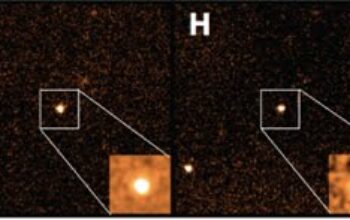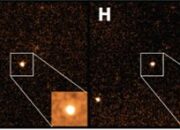In the realm of quantum computing, the landscape is rapidly evolving, marked by exhilarating advancements and profound enigmas. Imagine for a moment: what if we could refine and reorganize qubits—the fundamental units of quantum information—into a more ordered state akin to a neatly combed hairstyle? This whimsical analogy poses an intriguing query: is it indeed feasible to ‘comb’ qubits, aligning them methodically to enhance computational efficiency? In this exploration, we delve into the challenge of qubit coherence and how innovative techniques may bring us closer to achieving a more orderly, reliable quantum computing framework.
Quantum computers distinguish themselves from classical counterparts through their utilization of qubits, which can exist in superpositions of both 0 and 1. This duality paves the way for an exponential increase in computational power, promising solutions to problems currently beyond the reach of classical machines. However, the very nature that grants quantum computers their power—superposition and entanglement—also introduces significant challenges. Qubits are notoriously susceptible to decoherence, a phenomenon where the fragile quantum state collapses due to external disturbances, noise, or interactions with the environment. The question arises: how can we mitigate the chaotic tendencies of qubits and, metaphorically speaking, comb them into a more usable configuration?
One avenue of research focuses on improving qubit coherence times. By utilizing materials with lower levels of environmental noise, scientists aim to prolong the lifespan of qubit states. This endeavor is akin to creating a serene environment that encourages calmness, allowing qubits to remain stable longer. Superconducting qubits, often employed in contemporary quantum processors, are promising candidates for these advancements. However, the quest is not straightforward. The challenge remains not only in sustaining coherence but also in amplifying the fidelity of operations performed on these qubits. This leads us to consider fault-tolerant quantum computation, a necessary step toward achieving practical quantum systems.
The implementation of quantum error correction codes serves as a practical approach to addressing decoherence. These codes are designed to detect and rectify errors that manifest during computations, ensuring the integrity of the quantum state. One of the most promising error correction frameworks is the surface code, which employs a two-dimensional lattice of qubits to detect and correct errors efficiently. Yet, the complexity of such systems can be daunting; as the number of required physical qubits increases disproportionately with the number of logical qubits needed, the challenge of scalability emerges. Can we then transmute this complexity into an ordered configuration, akin to deftly combing a tangled mane?
In pursuit of this goal, researchers have increasingly turned to novel materials and architectures. Topological qubits, for instance, are currently being explored as a method to engineer more robust quantum states. These qubits are theorized to harness anyons—exotic particles that possess non-abelian statistics—offering inherent protection against local disturbances through their topological nature. If successful, topological qubits could represent a revolutionary paradigm shift, facilitating a more resilient system with longer coherence times and reduced error rates. Even so, the road to realization remains riddled with experimental complexities and technical hurdles that demand innovative solutions.
The interplay between quantum control techniques and the architectural design of qubit systems further complicates the challenge but also opens avenues for invention. Techniques such as dynamical decoupling—wherein a series of pulses are applied to qubits to counteract noise—may serve to extend coherence times effectively. Additionally, integrating advancements in machine learning with quantum control could elevate the precision and adaptability of managing qubit states. This multidisciplinary approach exemplifies the profound interconnectedness of various fields, illustrating that solutions to quantum computing challenges may arise from unexpected collaborations.
As we ponder the notion of ‘combing’ qubits, we must also reflect on the implications of achieving a more ordered and fault-tolerant quantum architecture. A fully realized quantum computer holds the potential to revolutionize numerous fields, from cryptography to drug discovery, by processing vast datasets and complex calculations at unprecedented speeds. However, the ethical considerations surrounding the use of these potent machines cannot be ignored. As the power of quantum computing burgeons, so too does the responsibility to manage its applications judiciously, requiring a careful balance between technological advancement and societal implications.
In summary, the challenge of creating neater qubits represents a microcosm of the broader quest for quantum computing excellence. The pursuit of coherence amidst the chaos embodies the spirit of innovation, as researchers venture into uncharted territories, seeking to harness the wild potentials of quantum mechanics. Whether through material science, computational methodologies, or philosophical reflection on the ethical ramifications, the endeavor to brush qubits into alignment is emblematic of humankind’s unyielding desire to master the intricate tapestries of nature’s laws. The question remains: how far can we go in our quest for modular quantum computing? Only time will tell as we continue to comb through the complexities of quantum mechanics, paving the way for the next generation of computational breakthroughs.










